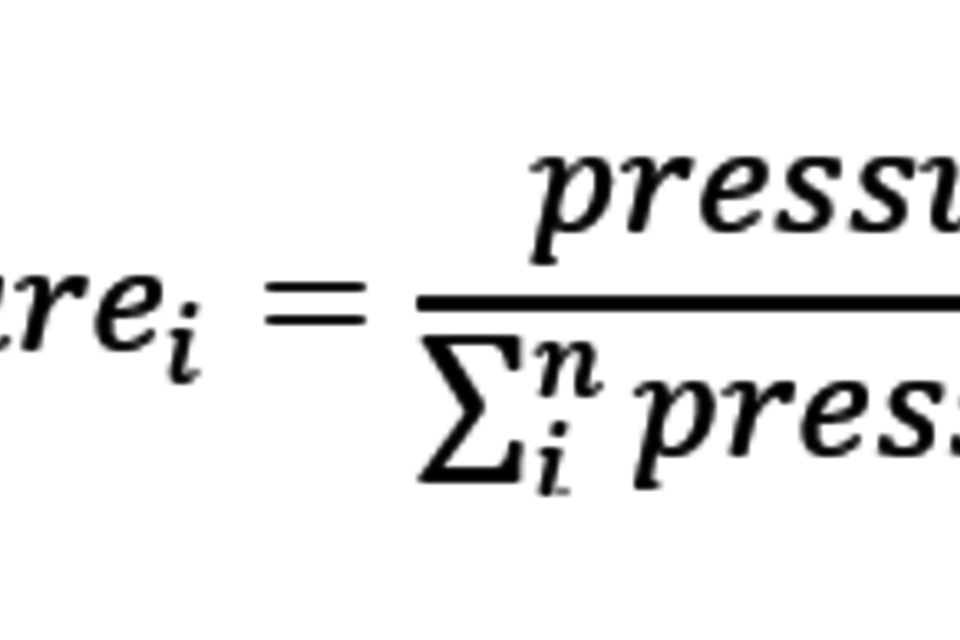Homelessness domestic abuse new burdens funding 2021 to 2022: Technical note
Published 7 June 2021
Applies to England
This funding allocation is based on the formula used to allocate additional funding in the 2021-22 Homelessness Prevention Grant. We calculate initial shares, and then apply a minimum cut-off to avoid local authorities receiving small amounts of funding.
1. Initial shares
a. First 80%
The first 80% of the share is allocated to reflect relative homelessness pressures. We derive a relative estimate of pressures using the following elements:
-
A: The number of housing benefit claimants at December 2019. We expect this to reflect the relative number of households becoming homeless. This is the sum of private and social rented sector housing benefit claimants and households on universal credit with a housing entitlement in the private and social rented sector. This information can be found on DWP stat Xplore.
-
B: Lower quartile monthly private rented sector rents for two-bedroom properties 2019-20. This reflects the relative costs of prevention in terms of securing accommodation for homeless households. This is available from table 2.4.
-
C: Area cost adjustment, as used in allocating COVID-19 related funding to lower-tier authorities. This reflects the relative costs of prevention in terms of staff time. More detail is available at Annex B. See the data.
The relative pressure is calculated using the following formula:

The allocation share for each local authority (i) is derived as the proportion of the total pressure in each local authority:

Missing data
Variable A – housing benefit claimants
We do not have a total number of housing benefit claimants for the newly formed Buckinghamshire Council. We estimate the total using the values for the 4 local authorities merged to form the council: Aylesbury, Chiltern, Wycombe and South Bucks.
Variable B – lower quartile rents
We do not have rent data for the following local authorities: Buckinghamshire Council; Bournemouth, Christchurch and Poole; West Suffolk; Somerset West and Taunton; East Suffolk; Dorset.
We estimate rents in these local authorities using a weighted average of rents across the local authorities that merged to create them (Buckinghamshire = Aylesbury, Chiltern, Wycombe and South Bucks; Bournemouth, Christchurch and Poole = Bournemouth, Christchurch and Poole; West Suffolk = Forest Heath and St Edmundsbury; Somerset West and Taunton = Somerset West and Taunton; East Suffolk = Suffolk Coastal and Waveney; Dorset = East Dorset, North Dorset, Purbeck, West Dorset and Weymouth and Portland).
Weights are based on the total number of homelessness prevention and relief duties owed in 2018-19. See the data.
Variable C
We do not have data on an area cost adjustment for Isles of Scilly. We use the area cost adjustment for Cornwall in its place.
b. Final 20%
The remaining 20% of the funding is allocated based on single homelessness pressures. This is calculated as the share of total single adult households owed a prevention or a relief duty in 2019-20. See the data.
Missing data
Where there is missing data in the published homelessness tables, we estimate local authority shares using the share of the first 80%, but reduce this share by 25% to ensure that local authorities do not gain (relative to 75% of local authorities) as a result of missing data. We then rescale all shares to ensure the total across all local authorities adds to 100%.
2. Applying the minimum cut-off
After calculating the initial share, we identify whether any local authority is receiving less than a cut-off of £8,000. We find that some local authorities are receiving less than £8,000, so we exclude the local authority receiving the least funding, and recycle their funding amongst the rest based on their relative shares. We repeat this until no local authorities are receiving less than £8,000.
